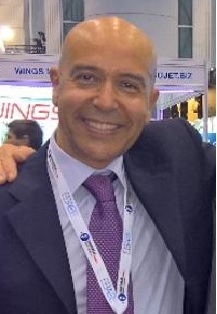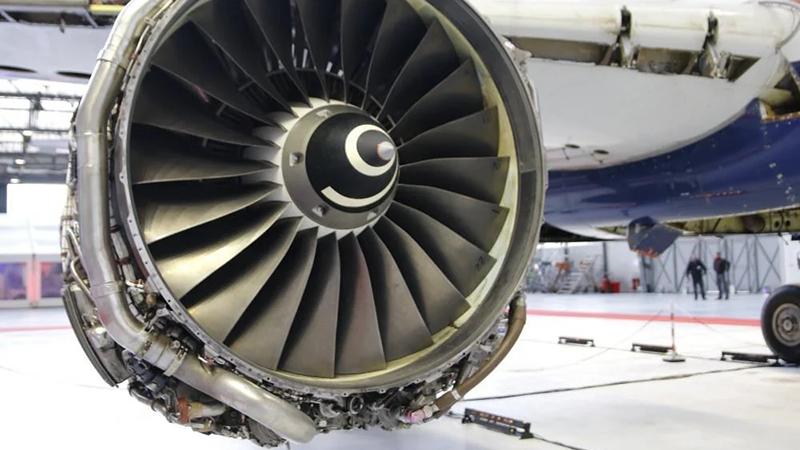Lessors Weigh Options In Constrained Midlife Aircraft Engine Market
Details
More Products & Services
Products & Services
Home - Aviation Group Marketing
Aviation Week Network
120 data points on over 156,000 commercial and business aviation aircraft, including military transports. Discover the most trustworthy resource for the complete aircraft history, plus ad hoc reports, month-over-month trend analysis and details on expected deliveries through 2050.
Aerospace | Aviation Week Network
Aviation Week Network
https://aviationweek.com/themes/custom/particle/dist/app-drupal/assets/awn-logo.svg
People

Andrea Rossi Prudente
Aviation Week Network

Anthony Lim
Aviation Week Network
Sales director

Becca Balmes
Aviation Week Network

Belinda Tan
Aviation Week Network

Brian Everstine
Aviation Week Network
Editor

Eddie Krankowski
Aviation Week Network
Assistant Manager, Tradeshows

erving dockery
Aviation Week Network

Lisa Tan
Aviation Week Network
Senior Marketing Manager

Mark Thomas
Aviation Week Network
Description
High demand for leased midlife engines is expected to continue for the next five years, as the segment is predicted to become increasingly competitive in the face of new durability challenges, supply chain disruptions and operator necessity.
On the engine side of the market, lease rates have spiked for midlife powerplants, but overhaul timelines also have extended vastly, as noted during a panel discussion at Aviation Week's MRO Americas in April.Lease rates on midlife engines have spikedAirlines wrestle with durability challenges and supply chain disruptions
“If you want to get a [CFM International] CFM56 or a [General Electric] CF6-80E, then it's a tough market out there, and the prices are following demand,” said Manuel Cordero, president and CEO of Cusco Aviation, an aircraft and engine trading, asset management and technical services company that deals mostly in midlife assets. “Anyone who has a midlife engine—and a Rolls-Royce RB211 as well—is holding onto something very valuable.
“There's a lot of technical [expertise] that goes into [midlife assets] because you really need to understand the asset as opposed to the newer aircraft, which is mostly a financial model,” Cordero added. “This [midlife segment] is beginning to take a lot more prevalence because of the issues with the OEMs, engines and supply chains.”
He said he expects the trend to continue for another five years while the new aircraft and engine supply chains stabilize. This means the market will be tight for certain assets, Cordero said.
While the industry has been challenged by the unanticipated speed of shop visits for new engine types, this is not new. When approaching the time for an engine overhaul, Omid Eslamipour, vice president of technical operations of Macquarie AirFinance, said the company usually will look to trade the asset as a solution.
“We take a look and see if we can trade that asset with an engine that's already available,” he said. “We've done this through forming partnerships and alliances with organizations providing resources and assets for trading.”
Recalling his time at United Airlines, which he left in 2011 after more than 25 years with the carrier, Eslamipour said the International Aero Engines V2500 experienced similar growing pains compared with some of its narrowbody predecessors.
“With any new technology, you're going to end up having these new growing pains,” he said, explaining that at the time, United's fleet diversification spared the airline from further pain. “Back then, it took nearly 10 years to perfect that engine, and I agree that it will take around five years to perfect the new engines.”
On the leasing side, Eslamipour said he thinks the challenge will lie in further extensions to midlife assets, straining availability.
On the engine side of the market, lease rates have spiked for midlife powerplants, but overhaul timelines also have extended vastly, as noted during a panel discussion at Aviation Week's MRO Americas in April.Lease rates on midlife engines have spikedAirlines wrestle with durability challenges and supply chain disruptions
“If you want to get a [CFM International] CFM56 or a [General Electric] CF6-80E, then it's a tough market out there, and the prices are following demand,” said Manuel Cordero, president and CEO of Cusco Aviation, an aircraft and engine trading, asset management and technical services company that deals mostly in midlife assets. “Anyone who has a midlife engine—and a Rolls-Royce RB211 as well—is holding onto something very valuable.
“There's a lot of technical [expertise] that goes into [midlife assets] because you really need to understand the asset as opposed to the newer aircraft, which is mostly a financial model,” Cordero added. “This [midlife segment] is beginning to take a lot more prevalence because of the issues with the OEMs, engines and supply chains.”
He said he expects the trend to continue for another five years while the new aircraft and engine supply chains stabilize. This means the market will be tight for certain assets, Cordero said.
While the industry has been challenged by the unanticipated speed of shop visits for new engine types, this is not new. When approaching the time for an engine overhaul, Omid Eslamipour, vice president of technical operations of Macquarie AirFinance, said the company usually will look to trade the asset as a solution.
“We take a look and see if we can trade that asset with an engine that's already available,” he said. “We've done this through forming partnerships and alliances with organizations providing resources and assets for trading.”
Recalling his time at United Airlines, which he left in 2011 after more than 25 years with the carrier, Eslamipour said the International Aero Engines V2500 experienced similar growing pains compared with some of its narrowbody predecessors.
“With any new technology, you're going to end up having these new growing pains,” he said, explaining that at the time, United's fleet diversification spared the airline from further pain. “Back then, it took nearly 10 years to perfect that engine, and I agree that it will take around five years to perfect the new engines.”
On the leasing side, Eslamipour said he thinks the challenge will lie in further extensions to midlife assets, straining availability.

Share
Recent Chats
Share via email
Future: handle WhatsApp here
Future: handle LinkedIn here
Future: handle Twitter here
SUBMENU HERE
Share via Chat
Copy Link

